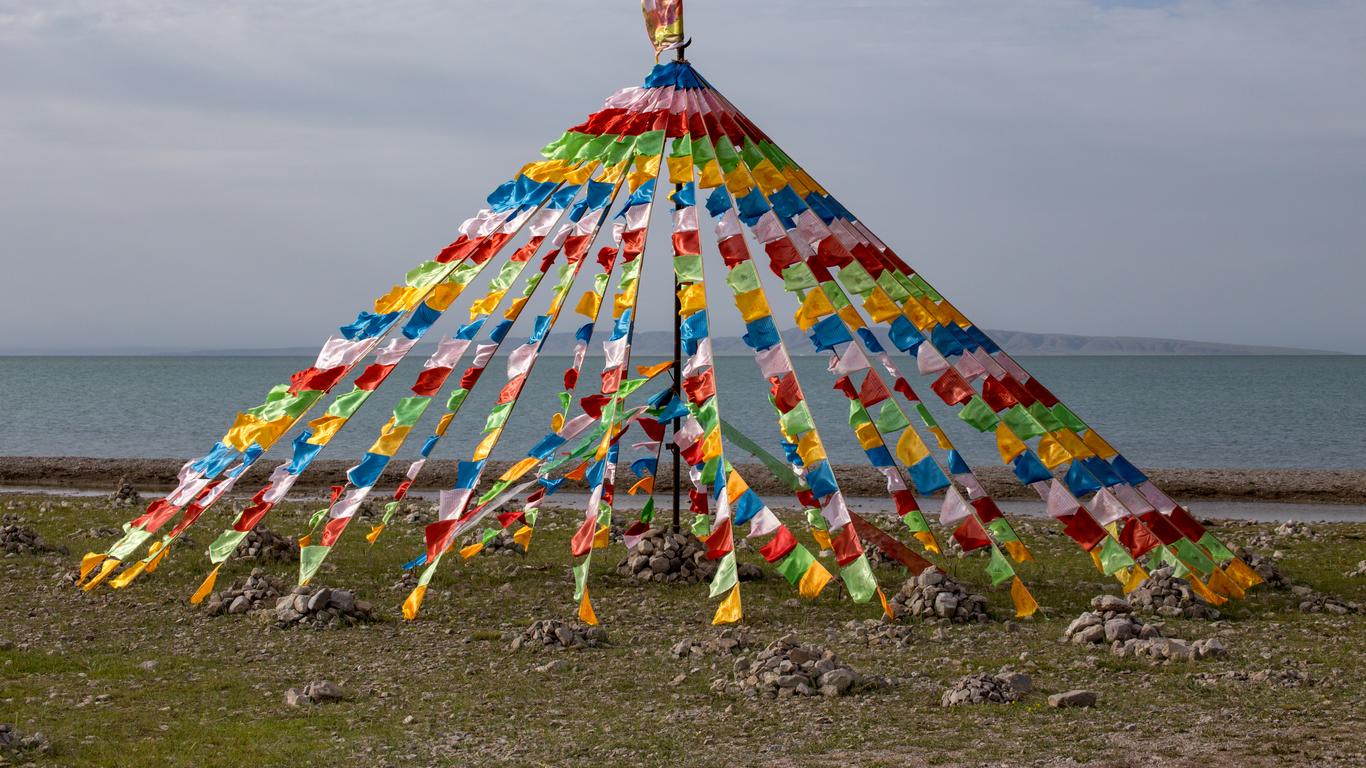Serving as the capital of Qinghai, Xining is the largest city on the Tibetan Plateau. It has a rich history spanning more than 2,000 years and was once an important trade hub on the Northern Silk Road. After being ruled by the Hans and the Tibetans, Xining was taken by the Song dynasty in 1104 and given its current name, which translates as “Peace in the West”.
Things to do in Xining
You can delve into the provincial history at the Qinghai Museum, which showcases locally discovered artefacts, historic photographs and Tibetan artworks. Don’t miss the China Tibetan Medicine Culture Museum, home to the world’s longest thangka scroll. Its exhibits include displays related to Tibetan medicine and science, as well as astronomy.
An architectural highlight of Xining is the Dongguan Grand Mosque, which was originally built in the 14th century and has been recently restored. Topped by two minarets and several domes, it combines Chinese, Islamic and Western architectural styles in its design. Also nearby is the more modern Nanguan Mosque, which features elegant marble and carved tile work.
Sprawling west of Xining is Qinghai Lake, which lies in a hollow of the Tibetan Plateau. It is the largest lake in China and features two islands, Cormorant and Egg, which provide an important habitat for migratory birdlife. During the Horse Year, Qinghai Lake is circumnavigated by Tibetan Buddhist pilgrims, either on foot or on horseback. Xining also makes a good base for visiting the Ta’er Monastery, which houses an extensive collection of Buddhist sculptures, statues and artefacts.
Getting around Xining
Xining Caojiapu International Airport is around 30 minutes’ drive from the city centre and has flights to destinations across China. Inter-city trains connect to the Xining railway station and buses travel throughout Xining, connecting most of its attractions.





